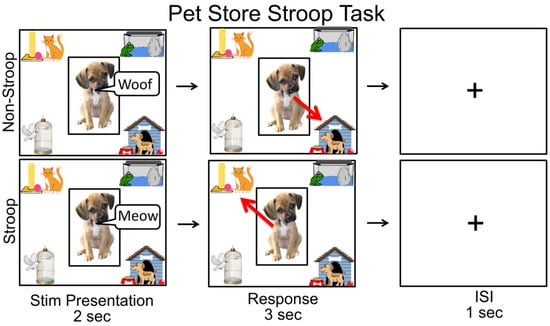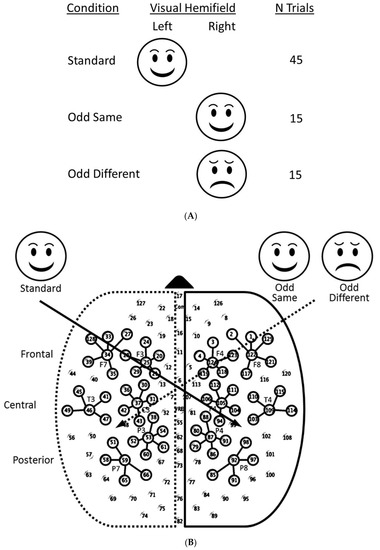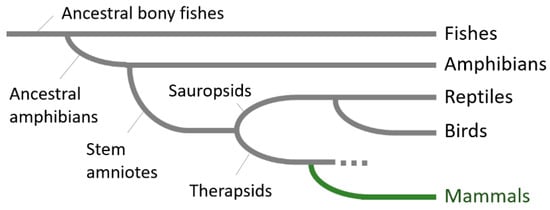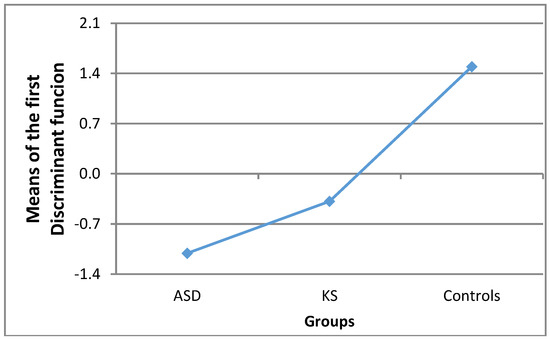Collection on Developmental Neuroscience
Share This Topical Collection
Editor
 Dr. Mark Burke
Dr. Mark Burke
 Dr. Mark Burke
Dr. Mark Burke
E-Mail
Website
Collection Editor
Department of Physiology and Biophysics, College of Medicine, Howard University, Washington, DC 20059, USA
Interests: neurodevelopment; neurogenesis; HIV; fetal alcohol exposure; hippocampus; cognitive impairment
Topical Collection Information
Dear Colleagues,
The mission of the Developmental Neuroscience Section is to publish articles that identify the mechanisms of neurodevelopmental processes, both normal and those that cause aberrant development leading to neurological disorders, from gestation through adolescence, which set the foundation of the adult configuration. The scope of this section includes a broad multidisciplinary approach to understanding clinical and basic aspects of neurodevelopment, as such, behavioral, cognitive, molecular, genetic, epigenetic and imaging studies are particularly welcome.
Dr. Mark Burke
Collection Editor
Manuscript Submission Information
Manuscripts should be submitted online at www.mdpi.com by registering and logging in to this website. Once you are registered, click here to go to the submission form. Manuscripts can be submitted until the deadline. All submissions that pass pre-check are peer-reviewed. Accepted papers will be published continuously in the journal (as soon as accepted) and will be listed together on the collection website. Research articles, review articles as well as short communications are invited. For planned papers, a title and short abstract (about 100 words) can be sent to the Editorial Office for announcement on this website.
Submitted manuscripts should not have been published previously, nor be under consideration for publication elsewhere (except conference proceedings papers). All manuscripts are thoroughly refereed through a single-blind peer-review process. A guide for authors and other relevant information for submission of manuscripts is available on the Instructions for Authors page. Brain Sciences is an international peer-reviewed open access monthly journal published by MDPI.
Please visit the Instructions for Authors page before submitting a manuscript.
The Article Processing Charge (APC) for publication in this open access journal is 2200 CHF (Swiss Francs).
Submitted papers should be well formatted and use good English. Authors may use MDPI's
English editing service prior to publication or during author revisions.
Published Papers (12 papers)
Open AccessArticle
Language Distance Moderates the Effect of a Mixed-Language Environment on New-Word Learning for 4-Year-Old Children
by
Zhengkai Niu, Zilong Li, Yunxiao Ma, Keke Yu and Ruiming Wang
Viewed by 1693
Abstract
As bilingual families increase, the phenomenon of language mixing among children in mixed-language environments has gradually attracted academic attention. This study aims to explore the impact of language mixing on vocabulary acquisition in bilingual children and whether language distance moderates this impact. We
[...] Read more.
As bilingual families increase, the phenomenon of language mixing among children in mixed-language environments has gradually attracted academic attention. This study aims to explore the impact of language mixing on vocabulary acquisition in bilingual children and whether language distance moderates this impact. We recruited two groups of bilingual children, Chinese–English bilinguals and Chinese–Japanese bilinguals, to learn two first-language new words in a monolingual environment and a mixed-language environment, respectively. The results showed that the participants could successfully recognize the novel words in the code-switching sentences. However, when we compared the performance of the two groups of bilingual children, we found that the gaze time proportion of the Chinese–English bilingual children under the code-switching condition was significantly higher than that of the Chinese–Japanese bilingual children, while there was no significant difference under the monolingual condition. This suggests that language mixing has an inhibitory effect on vocabulary acquisition in bilingual children and that this inhibitory effect is influenced by language distance, that is, the greater the language distance, the stronger the inhibitory effect. This study reveals the negative impact of language mixing on vocabulary acquisition in bilingual children and also implies that there may be some other influencing factors, so more research is needed on different types of bilingual children.
Full article
►▼
Show Figures
Open AccessArticle
Irritability Moderates the Association between Cognitive Flexibility Task Performance and Related Prefrontal Cortex Activation in Young Children
by
Yanwei Li, Adam S. Grabell and Susan B. Perlman
Cited by 1 | Viewed by 2220
Abstract
The association between cognitive flexibility and related neural functioning has been inconsistent. This is particularly true in young children, where previous studies have found heterogenous results linking behavior and neural function, raising the possibility of unexplored moderators. The current study explored the moderating
[...] Read more.
The association between cognitive flexibility and related neural functioning has been inconsistent. This is particularly true in young children, where previous studies have found heterogenous results linking behavior and neural function, raising the possibility of unexplored moderators. The current study explored the moderating role of dimensional irritability in the association between cognitive flexibility task performance and prefrontal activation in young children. A total of 106 3- to 7-year-old children were recruited to complete a custom-designed, child-adapted, cognitive flexibility task, and 98 of them were included in the data analysis. The children’s dorsolateral prefrontal cortex activation was monitored using functional near-infrared spectroscopy, and their levels of irritability were reported by parents using the MAP-DB Temper Loss subscale. Results indicated that the mean reaction time of the cognitive flexibility task was negatively correlated with concurrent prefrontal activation. No evidence was found for the association between task accuracy and prefrontal activation. Moreover, irritability moderated the association between the mean reaction time and prefrontal activation. Children high in irritability exhibited a stronger negative association between the mean reaction time and related prefrontal activation than children low in irritability. The moderating model suggested a novel affective–cognitive interaction to investigate the associations between cognitive task performance and their neural underpinnings.
Full article
►▼
Show Figures
Open AccessArticle
Electrophysiological Evidence for Interhemispheric Connectivity and Communication in Young Human Infants
by
Marc H. Bornstein, Clay Mash, Roberto Romero, Amir H. Gandjbakhche and Thien Nguyen
Viewed by 2206
Abstract
Little is known empirically about connectivity and communication between the two hemispheres of the brain in the first year of life, and what theoretical opinion exists appears to be at variance with the meager extant anatomical evidence. To shed initial light on the
[...] Read more.
Little is known empirically about connectivity and communication between the two hemispheres of the brain in the first year of life, and what theoretical opinion exists appears to be at variance with the meager extant anatomical evidence. To shed initial light on the question of interhemispheric connectivity and communication, this study investigated brain correlates of interhemispheric transmission of information in young human infants. We analyzed EEG data from 12 4-month-olds undergoing a face-related oddball ERP protocol. The activity in the contralateral hemisphere differed between odd-same and odd-difference trials, with the odd-different response being weaker than the response during odd-same trials. The infants’ contralateral hemisphere “recognized” the odd familiar stimulus and “discriminated” the odd-different one. These findings demonstrate connectivity and communication between the two hemispheres of the brain in the first year of life and lead to a better understanding of the functional integrity of the developing human infant brain.
Full article
►▼
Show Figures
Open AccessArticle
Searching for a Relationship between Early Breastfeeding and Cognitive Development of Attention and Working Memory Capacity
by
Tiziana Pedale, Serena Mastroberardino, Claudia Del Gatto, Michele Capurso, Francesca Bellagamba, Elsa Addessi, Simone Macrì and Valerio Santangelo
Cited by 3 | Viewed by 2206
Abstract
Previous research consistently reported that subjects that were exclusively breastfed (eBF) vs. not-exclusively breastfed (neBF) during infancy (0–6 months) showed increased scores of general intelligence measures (e.g., the intelligence quotient). However, the existent literature largely neglected whether breastfeeding also affects specific cognitive processes,
[...] Read more.
Previous research consistently reported that subjects that were exclusively breastfed (eBF) vs. not-exclusively breastfed (neBF) during infancy (0–6 months) showed increased scores of general intelligence measures (e.g., the intelligence quotient). However, the existent literature largely neglected whether breastfeeding also affects specific cognitive processes, such as attention and working memory (WM) capacity. We tested whether eBF vs. neBF subjects showed performance differences in relation to these two core cognitive functions. The Attention Network Test (ANT), to measure alerting, orienting, and conflict, and the Change Colour Task (CCT), to measure visuospatial WM capacity, were administered to 144 participants divided according to age (6-, 10-, and 18-year-old participants) and breastfeeding (eBF or neBF during 0–6 months of life). Importantly, the sub-groups were homogenous in terms of maternal education, a factor potentially affecting the relation between breastfeeding and cognition. While we found increased performance as a function of participants’ age in both tasks, we failed to observe effects related to breastfeeding, as evidenced by Bayesian analyses. These findings highlight for the first time that the pattern of nutrition provided during early infancy does not appear to affect the development of attention and WM capacity, at least starting from the age considered in the present study.
Full article
►▼
Show Figures
Open AccessReview
Cortical Visual Impairment in Childhood: ‘Blindsight’ and the Sprague Effect Revisited
by
Gerry Leisman, Calixto Machado and Robert Melillo
Cited by 1 | Viewed by 5020
Abstract
The paper discusses and provides support for diverse processes of brain plasticity in visual function after damage in infancy and childhood in comparison with injury that occurs in the adult brain. We provide support and description of neuroplastic mechanisms in childhood that do
[...] Read more.
The paper discusses and provides support for diverse processes of brain plasticity in visual function after damage in infancy and childhood in comparison with injury that occurs in the adult brain. We provide support and description of neuroplastic mechanisms in childhood that do not seemingly exist in the same way in the adult brain. Examples include the ability to foster the development of thalamocortical connectivities that can circumvent the lesion and reach their cortical destination in the occipital cortex as the developing brain is more efficient in building new connections. Supporting this claim is the fact that in those with central visual field defects we can note that the extrastriatal visual connectivities are greater when a lesion occurs earlier in life as opposed to in the neurologically mature adult. The result is a significantly more optimized system of visual and spatial exploration within the ‘blind’ field of view. The discussion is provided within the context of “blindsight” and the “Sprague Effect”.
Full article
►▼
Show Figures
Open AccessReview
New Insights into Potocki-Shaffer Syndrome: Report of Two Novel Cases and Literature Review
by
Slavica Trajkova, Eleonora Di Gregorio, Giovanni Battista Ferrero, Diana Carli, Lisa Pavinato, Geoffroy Delplancq, Paul Kuentz and Alfredo Brusco
Cited by 8 | Viewed by 5182
Abstract
Potocki-Shaffer syndrome (PSS) is a rare non-recurrent contiguous gene deletion syndrome involving chromosome 11p11.2. Current literature implies a minimal region with haploinsufficiency of three genes,
ALX4 (parietal foramina),
EXT2 (multiple exostoses), and
PHF21A (craniofacial anomalies, and intellectual disability). The rest of the PSS
[...] Read more.
Potocki-Shaffer syndrome (PSS) is a rare non-recurrent contiguous gene deletion syndrome involving chromosome 11p11.2. Current literature implies a minimal region with haploinsufficiency of three genes,
ALX4 (parietal foramina),
EXT2 (multiple exostoses), and
PHF21A (craniofacial anomalies, and intellectual disability). The rest of the PSS phenotype is still not associated with a specific gene. We report a systematic review of the literature and included two novel cases. Because deletions are highly variable in size, we defined three groups of patients considering the PSS-genes involved. We found 23 full PSS cases (
ALX4,
EXT2, and
PHF21A), 14 cases with
EXT2-ALX4, and three with
PHF21A only. Among the latter, we describe a novel male child showing developmental delay, café-au-lait spots, liner postnatal overgrowth and West-like epileptic encephalopathy. We suggest PSS cases may have epileptic spasms early in life, and
PHF21A is likely to be the causative gene. Given their subtle presentation these may be overlooked and if left untreated could lead to a severe type or deterioration in the developmental plateau. If our hypothesis is correct, a timely therapy may ameliorate PSS phenotype and improve patients’ outcomes. Our analysis also shows
PHF21A is a candidate for the overgrowth phenotype.
Full article
►▼
Show Figures
Open AccessArticle
Effects of Phosphatidylserine Source of Docosahexaenoic Acid on Cerebellar Development in Preterm Pigs
by
Daniel Chizhikov, Randal K. Buddington and Igor Y. Iskusnykh
Cited by 11 | Viewed by 4155
Abstract
Preterm birth, a major contributor to infant mortality and morbidity, impairs development of the cerebellum, the brain region involved in cognitive processing and motor function. Previously, we showed that at term-equivalent age, preterm pigs that received formula supplemented with docosahexaenoic acid (DHA) esterified
[...] Read more.
Preterm birth, a major contributor to infant mortality and morbidity, impairs development of the cerebellum, the brain region involved in cognitive processing and motor function. Previously, we showed that at term-equivalent age, preterm pigs that received formula supplemented with docosahexaenoic acid (DHA) esterified to phosphatidylserine (PS) had cerebellar weights similar to those of newborn term pigs and were heavier than control preterm pigs. However, whether PS-DHA promotes the development of specific cerebellar cell populations or enhances key developmental processes remains unknown. Here we investigated the effects of the PS-DHA on development of the cerebellum in preterm pigs delivered via caesarean section and reared for ten days on a milk replacer with either PS-DHA (experimental group) or sunflower oil (control group). Upon necropsy, key cerebellar populations were analyzed using immunohistochemistry. Consumption of PS-DHA was associated with the expansion of undifferentiated granule cell precursors and increased proliferation in the external granule cell layer (EGL). Preterm pigs that received PS-DHA also had significantly fewer apoptotic cells in the internal granule cell layer (IGL) that contains differentiated granule neurons. PS-DHA did not affect the number of differentiating granule cells in the inner EGL, thickness of the inner EGL, density of Purkinje cells, or Bergmann glial fibers, or diameter of Purkinje cells. Thus, PS-DHA may support cerebellar development in preterm subjects by enhancing proliferation of granule cells, a process specifically inhibited by preterm birth, and increasing the survival of granule cells in the IGL. These findings suggest that PS-DHA is a promising candidate for clinical studies directed at enhancing brain development.
Full article
►▼
Show Figures
Open AccessEditorial
Developmental Dyslexia: Where Do We Go from Here?
by
Paul E. Engelhardt
Cited by 3 | Viewed by 5213
Abstract
This editorial follows an influential review paper published in Brain Sciences in 2018 (
What is Developmental Dyslexia? by John Stein). In this editorial, I present a critical look at the arguments in Stein’s review, with a particular view towards “looking ahead”. In
[...] Read more.
This editorial follows an influential review paper published in Brain Sciences in 2018 (
What is Developmental Dyslexia? by John Stein). In this editorial, I present a critical look at the arguments in Stein’s review, with a particular view towards “looking ahead”. In looking ahead, I will focus on why dyslexia has been largely neglected by psycholinguistics and, in particular, shortfalls in knowledge about sentence processing. I will highlight some things that I think psycholinguistic methodologies can contribute to the understanding of developmental dyslexia. The editorial will then turn to address the larger research context of dyslexia. In short, investigations of dyslexia tend to be conducted across a wide range of disciplines, and by individuals with varied backgrounds, divergent views, and different goals. One argument I advance is that dyslexia has reached a point where “interdisciplinary” collaboration is essential, and in the event that that is not successful, the field would at least benefit from “adversarial collaborations”. Finally, I briefly address the issue of interventions (raised by Stein) for older children and adolescents by returning to the contributions that psycholinguistics can provide to dyslexia. The crux of my argument here is that there exists a missing link in interventions, and that missing link is sentence-level language comprehension.
Full article
►▼
Show Figures
Open AccessReview
Use of Prescribed Psychotropics during Pregnancy: A Systematic Review of Pregnancy, Neonatal, and Childhood Outcomes
by
Catherine E. Creeley and Lisa K. Denton
Cited by 35 | Viewed by 14545
Abstract
This paper reviews the findings from preclinical animal and human clinical research investigating maternal/fetal, neonatal, and child neurodevelopmental outcomes following prenatal exposure to psychotropic drugs. Evidence for the risks associated with prenatal exposure was examined, including teratogenicity, neurodevelopmental effects, neonatal toxicity, and long-term
[...] Read more.
This paper reviews the findings from preclinical animal and human clinical research investigating maternal/fetal, neonatal, and child neurodevelopmental outcomes following prenatal exposure to psychotropic drugs. Evidence for the risks associated with prenatal exposure was examined, including teratogenicity, neurodevelopmental effects, neonatal toxicity, and long-term neurobehavioral consequences (i.e., behavioral teratogenicity). We conducted a comprehensive review of the recent results and conclusions of original research and reviews, respectively, which have investigated the short- and long-term impact of drugs commonly prescribed to pregnant women for psychological disorders, including mood, anxiety, and sleep disorders. Because mental illness in the mother is not a benign event, and may itself pose significant risks to both mother and child, simply discontinuing or avoiding medication use during pregnancy may not be possible. Therefore, prenatal exposure to psychotropic drugs is a major public health concern. Decisions regarding drug choice, dose, and duration should be made carefully, by balancing severity, chronicity, and co-morbidity of the mental illness, disorder, or condition against the potential risk for adverse outcomes due to drug exposure. Globally, maternal mental health problems are considered as a major public health challenge, which requires a stronger focus on mental health services that will benefit both mother and child. More preclinical and clinical research is needed in order to make well-informed decisions, understanding the risks associated with the use of psychotropic medications during pregnancy.
Full article
Open AccessReview
Peer Victimization and Onset of Social Anxiety Disorder in Children and Adolescents
by
Maria Pontillo, Maria Cristina Tata, Roberto Averna, Francesco Demaria, Prisca Gargiullo, Silvia Guerrera, Maria Laura Pucciarini, Ornella Santonastaso and Stefano Vicari
Cited by 56 | Viewed by 12572
Abstract
Background: In the literature, several studies have proposed that children and adolescents with social anxiety had experienced previously victimization from peers and siblings. The aim of this review was to contribute to the updating of recent findings about the relationship between peer victimization
[...] Read more.
Background: In the literature, several studies have proposed that children and adolescents with social anxiety had experienced previously victimization from peers and siblings. The aim of this review was to contribute to the updating of recent findings about the relationship between peer victimization and onset of social anxiety in children and adolescents. Methods: A selective review of literature published between 2011 and 2018 on Social Anxiety Disorder in children and adolescents that experienced peer victimization during childhood and adolescence. Results: Seventeen studies are included. All studies showed that peer victimization is positively correlated to the presence of social anxiety. Moreover, the perpetration of peer victimization may contribute to the maintenance and the exacerbation of social anxiety symptoms. Conclusions: In children and adolescents with Social Anxiety Disorder, it is necessary to evaluate firstly the presence of peer victimization experiences. Subsequently, therapeutics programs targeted to elaborate these experiences and to reduce the anticipatory anxiety and the avoidance that characterized these children and adolescents can be proposed.
Full article
►▼
Show Figures
Open AccessReview
Parallel Emergence of a Compartmentalized Striatum with the Phylogenetic Development of the Cerebral Cortex
by
Tadashi Hamasaki and Satoshi Goto
Cited by 7 | Viewed by 6202
Abstract
The intricate neuronal architecture of the striatum plays a pivotal role in the functioning of the basal ganglia circuits involved in the control of various aspects of motor, cognitive, and emotional functions. Unlike the cerebral cortex, which has a laminar structure, the striatum
[...] Read more.
The intricate neuronal architecture of the striatum plays a pivotal role in the functioning of the basal ganglia circuits involved in the control of various aspects of motor, cognitive, and emotional functions. Unlike the cerebral cortex, which has a laminar structure, the striatum is primarily composed of two functional subdivisions (i.e., the striosome and matrix compartments) arranged in a mosaic fashion. This review addresses whether striatal compartmentalization is present in non-mammalian vertebrates, in which simple cognitive and behavioral functions are executed by primitive sensori-motor systems. Studies show that neuronal subpopulations that share neurochemical and connective properties with striosomal and matrix neurons are present in the striata of not only anamniotes (fishes and amphibians), but also amniotes (reptiles and birds). However, these neurons do not form clearly segregated compartments in these vertebrates, suggesting that such compartmentalization is unique to mammals. In the ontogeny of the mammalian forebrain, the later-born matrix neurons disperse the early-born striosome neurons into clusters to form the compartments in tandem with the development of striatal afferents from the cortex. We propose that striatal compartmentalization in mammals emerged in parallel with the evolution of the cortex and possibly enhanced complex processing of sensory information and behavioral flexibility phylogenetically.
Full article
►▼
Show Figures
Open AccessArticle
Reasoning on Figurative Language: A Preliminary Study on Children with Autism Spectrum Disorder and Klinefelter Syndrome
by
Sergio Melogno, Maria Antonietta Pinto, Teresa Gloria Scalisi, Margherita Orsolini, Luigi Tarani and Gloria Di Filippo
Cited by 7 | Viewed by 5318
Abstract
In this study we explored metaphor and idiom competencies in two clinical populations, children with autistic spectrum disorder (ASD) and children with Klinefelter syndrome (KS), (age range: 9–12), compared to typically developing (TD) children of the same age. These three groups were tested
[...] Read more.
In this study we explored metaphor and idiom competencies in two clinical populations, children with autistic spectrum disorder (ASD) and children with Klinefelter syndrome (KS), (age range: 9–12), compared to typically developing (TD) children of the same age. These three groups were tested with two multiple-choice tests assessing idiom comprehension through iconic and verbal alternatives and a metaphor comprehension test composed of novel, physical-psychological metaphors, requesting verbal explanations. To these instruments, another test was added, assessing basic sentence comprehension. Performances on the different linguistic tasks were examined by means of discriminant analysis which showed that idiom comprehension had a very small weight in distinguishing children with ASD from TD controls, whereas metaphor explanation did distinguish them. This study suggests that figurative language comprehension is not a “core deficit” per se in individuals with ASD. Only when the task requires to explicitly construct and explain a semantic mapping between the two terms of a metaphor does the performance of children with ASD significantly deviate from the typical population. These results are interpreted in terms of a difficulty in children with ASD and KS with complex cognitive and linguistic processes and also in relation with clinical assessment.
Full article
►▼
Show Figures

















